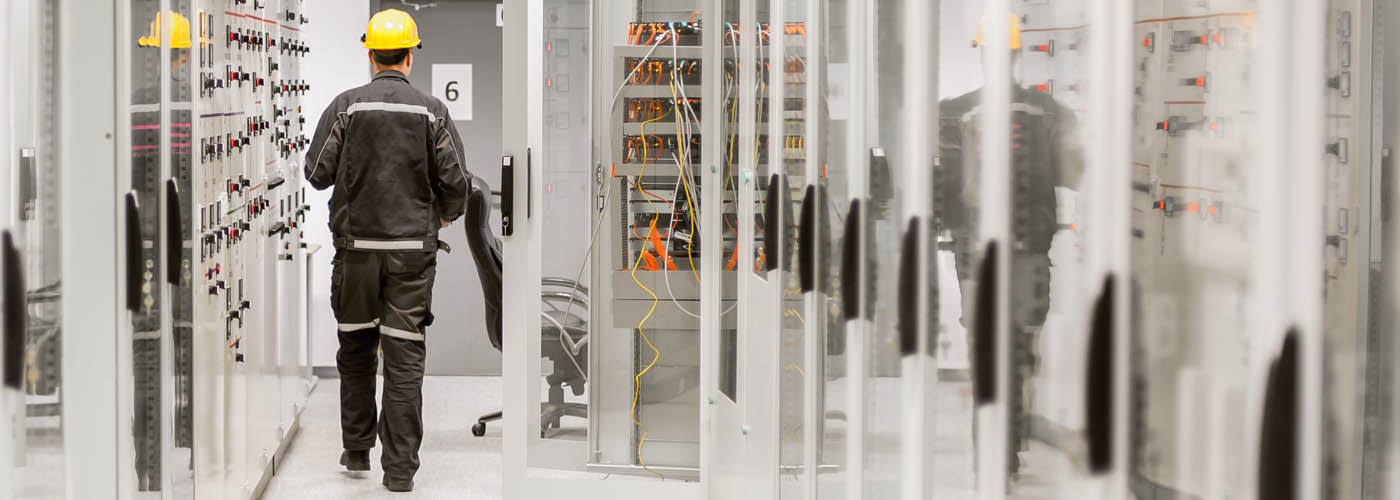Low Voltage Electrical Networks

The categories of services we perform for you in low voltage electrical installations are:
DESIGN OF ELECTRICAL INSTALLATIONS
According to the legal provisions, no electrical installation can be executed except based on a project carried out by a certified designer.
Our company complies with this requirement and encourages all customers to request the existence of a project. Within our company there are specialized and authorized designers who can design any type of low voltage electrical installation.
EXECUTION OF LOW VOLTAGE ELECTRICAL INSTALLATIONS
Electrical installations are those installations which are intended to use electricity for power, lighting and other industrial or domestic purposes.
From the point of view of the place where it is executed, the electrical installations are divided into:
- Indoor installations, which include conductors with all accessory elements for mounting, interrupting, protection that are mounted inside buildings of any kind.
- Exterior installations, in which the elements of the installation are mounted outside the buildings.
Electrical installations can only be used for lighting and are called electrical lighting installations, or they can be used to supply various high-power electrical receivers, such as electric motors and ovens, welding machines, etc. and are called electrical power installations.
Any electrical installation is executed according to an execution project drawn up by specialized designers.
Lighting installations are mainly supplied from switchboards separate from those supplying power installations.
GENERATOR AND STABILIZER INSTALLATION FOR ELECTRICITY POWER SUPPLY
Generator sets are recommended:
- in hard to reach areas where there is no electricity supply network or bringing it involves high costs.
- inside special purpose buildings: hospitals, banks, shops, company headquarters, airports, embassies, etc.).
- inside the productive locations with continuous fire.
- inside the military units (MApN, MI, SRI).
- residential dwellings that have frequent and long-term interruptions in electricity supply.
The advantages of using generators are:
- mobility.
- practically unlimited autonomy.
- ensures total energy independence.
- the presence of the network line is not necessary to be able to install a generator set;
- these groups are fully automated, and do not require human intervention.
Voltage stabilizers are the ideal solution for protecting against variations, shocks and voltage peaks of sensitive equipment. Variations and shocks in the power supply network, meteorological phenomena can cause equipment failure, and this leads to a large investment in time, labor and often investment in money to recover losses. In general, any electrical equipment that is supplied from the power supply network can fail due to problems in the network. One way to protect this equipment is to install a voltage stabilizer between the equipment to be protected and the power supply network. Voltage stabilizers are especially intended for equipment that is not fatally affected by a voltage drop, but which is sensitive to fluctuations in the supply voltage. This category includes the following equipment: fiscal cash registers, electro-medical equipment, laboratory equipment, printers, copiers, plotters, scanners, controls for industrial equipment, lighting systems, air conditioners, electronic equipment for household use, etc.
EARTHING AND LIGHTNING EQUIPMENT
The earthing installation is the assembly of conductors and electrodes through which the elements of an installation are connected to the ground.
INSTALLATION OF INTERIOR OR STREET, NORMAL OR SAFETY LIGHTING
Light largely conditions human activity. Proper lighting helps to increase labor productivity, reduce the number of accidents, and avoid errors.
Electric lighting installations must achieve a certain level of lighting, simultaneously with the fulfillment of quality conditions, demanded by the subjective character of the lighting. In addition, lighting installations must be highly adaptable to various operating conditions in order to be economical, given the close correlation with natural lighting.
CHECKS, ELECTRICAL MEASUREMENTS, AND ISSUE OF PRAM LETTERS FOR EARTHING
PRAM verification is a name entered in the common language and actually means the verification of protection through earthing sockets and lightning rods and aims to:
- prevention of electric shock to personnel using the electrical installation and work equipment
- preventing the burning of buildings and preventing the destruction of electrical and electronic equipment
Following the PRAM verification, a verification bulletin is drawn up which includes:
- measurement conditions.
- device type.
- the performer and the place of measurement.
These bulletins being necessary for the controls performed by the Labor Protection, the Consumer Protection, and the Fire Brigade.
SINGLE-PHASE OR THREE-PHASE AERIAL OR UNDERGROUND CONNECTIONS
The electrical connection represents the low voltage installation destined to supply electricity to a consumer, executed from the electric distribution line to the electric meter from the consumer.
The main parts of the electrical connection are:
- the actual underground or overhead connection that constitutes the connection from the power line to the connection terminal of the connection.
- the measuring and protection block, in which the electrical equipment necessary for the protection of the electric column and the distribution of the electric energy is mounted, as well as the electrical measuring device.
- the electrical column, which is the connection between the equipment of the measuring and protection block and the subscriber’s panel.
The use of underground connections is required especially in built and systematized urban areas, where the air network and the aerial connections are not indicated. Not being exposed to various external factors, the underground connections have a higher safety in operation.
